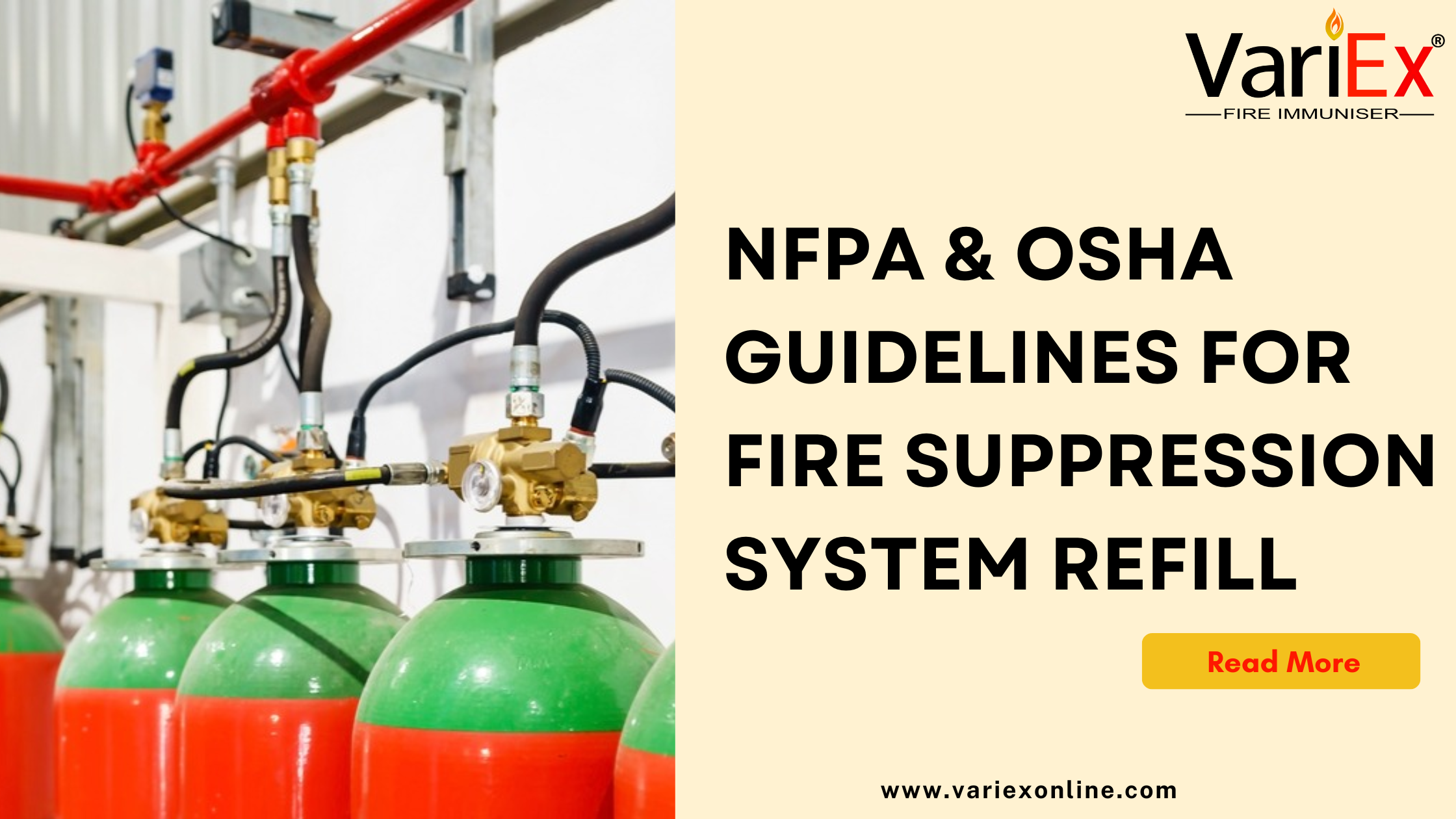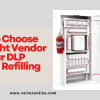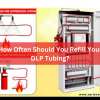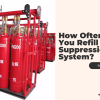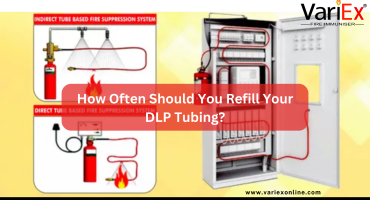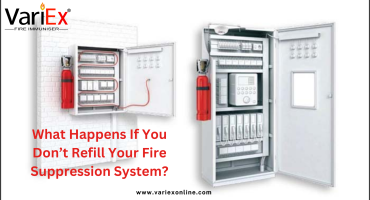![]()
Fire Immuniser
+91-7829629111
Email: info@variex.in
Varistor Technologies Pvt. Ltd.
Block-1, First Floor, Ardente Office One, Hoodi Circle, ITPL Main Road, Bengaluru, Karnataka 560048, IN
NFPA & OSHA Guidelines for Fire Suppression System Refill
NFPA & OSHA Guidelines for Fire Suppression System Refill
Fire suppression systems play a crucial role in protecting lives, property, and businesses from devastating fires. To ensure these systems function correctly, they must be regularly maintained and refilled according to strict regulatory standards. Two of the most important regulatory bodies governing fire suppression system refills are the National Fire Protection Association (NFPA) and the Occupational Safety and Health Administration (OSHA).
This guide provides a detailed overview of NFPA & OSHA guidelines for fire suppression system refills, compliance requirements, and best practices to avoid fines and ensure safety.
Understanding NFPA and OSHA Regulations
1. What is NFPA?
The National Fire Protection Association (NFPA) is a global organization that develops fire safety standards to reduce risks and improve fire prevention strategies. The key NFPA standards related to fire suppression system refills include:
- NFPA 10 – Standard for Portable Fire Extinguishers
- NFPA 17 – Standard for Dry Chemical Extinguishing Systems
- NFPA 25 – Standard for Inspection, Testing, and Maintenance of Water-Based Fire Protection Systems
- NFPA 96 – Standard for Ventilation Control and Fire Protection of Commercial Cooking Operations
2. What is OSHA?
The Occupational Safety and Health Administration (OSHA) is a U.S. government agency responsible for workplace safety. OSHA enforces fire safety regulations in workplaces, ensuring compliance with NFPA standards and implementing strict penalties for non-compliance.
Some key OSHA regulations related to fire suppression system refills include:
- 29 CFR 1910.157 – Fire Extinguishers and Maintenance Requirements
- 29 CFR 1910.160 – Fixed Fire Suppression Systems
- 29 CFR 1910.252 – Welding and Cutting Fire Safety
NFPA & OSHA Requirements for Fire Suppression System Refills
The following table summarizes the NFPA and OSHA requirements related to fire suppression system refills:
NFPA & OSHA Guidelines for Fire Suppression System Refills
| Regulation | Description | Frequency | Compliance Requirement |
|---|---|---|---|
| NFPA 10 | Requires fire extinguishers to be refilled or recharged after each use or when inspection indicates low pressure. | Annually & after discharge | Certified technicians must inspect and refill fire extinguishers. |
| NFPA 17 | Regulates dry chemical fire suppression systems, requiring periodic maintenance and refilling. | Semi-Annually | Pressure tests and chemical refills must be performed. |
| NFPA 25 | Covers inspection, testing, and refilling of water-based fire protection systems. | Quarterly, Annually, or as required | Sprinkler systems must undergo hydrostatic tests and pressure checks. |
| NFPA 96 | Requires kitchen fire suppression systems to be refilled after every discharge or at least semi-annually. | Every 6 months or after discharge | System nozzles and tanks must be inspected and recharged. |
| OSHA 1910.157 | Mandates that all fire extinguishers be refilled after use or when pressure is low. | Monthly visual checks, Annual maintenance | Employers must ensure fire extinguishers are always operational. |
| OSHA 1910.160 | Fixed suppression systems must be refilled and maintained to function properly in case of fire. | Semi-Annually & After Discharge | Systems must be serviced by licensed professionals. |
Step-by-Step Guide to Fire Suppression System Refills
1. Conduct a Visual Inspection
- Check for low pressure readings on fire suppression systems.
- Inspect for leaks, corrosion, or damages in the system.
- Ensure nozzles and hoses are unobstructed.
2. Schedule Regular Maintenance
- Fire extinguishers should be inspected monthly and refilled annually.
- Fixed suppression systems should be serviced semi-annually.
- Keep records of all inspections and refills to ensure compliance.
3. Engage a Certified Fire Safety Professional
- Only licensed technicians should handle fire suppression refills.
- Ensure pressure testing is performed when required.
- Verify that refilled systems meet manufacturer and regulatory standards.
4. Follow Proper Disposal Procedures
- Dispose of used fire suppression agents per EPA and local guidelines.
- Use environmentally friendly refill options when available.
5. Train Employees on Fire Safety Protocols
- Conduct fire drills and safety training to familiarize employees with fire suppression systems.
- Ensure workers know how to use extinguishers and manual activation switches.
Common Mistakes to Avoid
❌ Skipping Regular Inspections
Failure to inspect and refill fire suppression systems can lead to system failure during an emergency, which may result in severe property damage and safety violations.
❌ Using Uncertified Refill Services
Always hire a licensed fire suppression technician to ensure compliance with NFPA and OSHA standards.
❌ Ignoring Manufacturer Recommendations
Refill and maintenance requirements vary by system type and manufacturer, so always follow the specific user manual and safety guidelines.
❌ Delaying Refills After Discharge
Even if a system was partially discharged, it must be refilled immediately to maintain protection.
❌ Neglecting Employee Training
A well-maintained fire suppression system is useless if employees don’t know how to operate it during an emergency.
Penalties for Non-Compliance with NFPA & OSHA
Failing to comply with NFPA & OSHA fire suppression refill regulations can lead to:
- OSHA fines up to $15,625 per violation for failing to maintain fire suppression systems.
- Business shutdowns due to severe fire hazards.
- Insurance policy cancellations for non-compliance.
- Legal liabilities in case of injuries or fatalities caused by a faulty system.
To avoid these consequences, ensure strict compliance with NFPA & OSHA guidelines and keep up with routine fire suppression refills.
Conclusion
Ensuring compliance with NFPA and OSHA guidelines for fire suppression system refills is essential for workplace safety and legal protection. Businesses should regularly inspect, refill, and maintain their fire suppression systems to prevent failures and ensure quick fire response.
By following industry standards, training employees, and hiring licensed professionals, companies can effectively reduce fire risks and maintain full regulatory compliance.
Frequently Asked Questions
Fire suppression systems should be refilled after every discharge or according to NFPA standards, usually every 6 to 12 months, depending on the type of system.
A system without a proper refill may fail to activate during a fire, leading to property damage, injuries, and regulatory fines.
No. NFPA & OSHA require fire suppression system refills to be performed by certified professionals to ensure safety and compliance.
The cost varies based on the system type but typically ranges from $200 to $1,500 depending on the size, agent type, and location.
Common signs include low pressure readings, visible damage, system discharge, and overdue inspection dates.
Final Say
At VariEx.in and VariexOnline.com, we specialize in supplying and installing top-quality fire fighting systems and equipment. From fire extinguishers to advanced suppression systems, we offer comprehensive solutions tailored to your needs. Our experienced team ensures precise installation and maintenance for optimal safety.
Trust VariEx for reliable fire protection. Contact us online or call 7829629111 to learn more.
We specialize in manufacturing, supplying, and distributing a comprehensive range of fire fighting equipment, including state-of-the-art fire extinguishers. Read our most searched blogs and find interesting information on topics such as how to use a fire extinguisher, how to calculate fire fighting water tank capacity, fire extinguisher refilling, obtaining a Fire NOC, understanding fire fighting systems, types of fire protection systems, the fire hydrant system, and the fire sprinkler system. These resources provide essential knowledge for ensuring safety and compliance with fire safety regulations. Additionally, you can explore guides on the maintenance of fire protection equipment, the latest advancements in fire safety technology, and best practices for fire risk assessment and management.
Our expertise extends to fire alarm systems, fire hydrant systems, and fire suppression systems, including fire sprinklers. Each product meets rigorous international standards for reliability and performance, ensuring effective fire safety products tailored to diverse applications and industries. Additionally, we are providing Fire Extinguisher Refilling and AMC services to ensure ongoing maintenance and operational readiness of fire safety equipment.
"WHAT YOU CAN READ NEXT"
 Read more +24 November 2023 in Fire Extinguisher
Read more +24 November 2023 in Fire ExtinguisherWhat types of fire extinguishers are available for different fire classes?
 Read more +11 April 2025 in Fire Suppression
Read more +11 April 2025 in Fire Suppression

